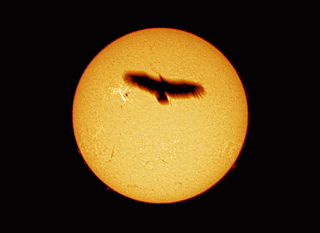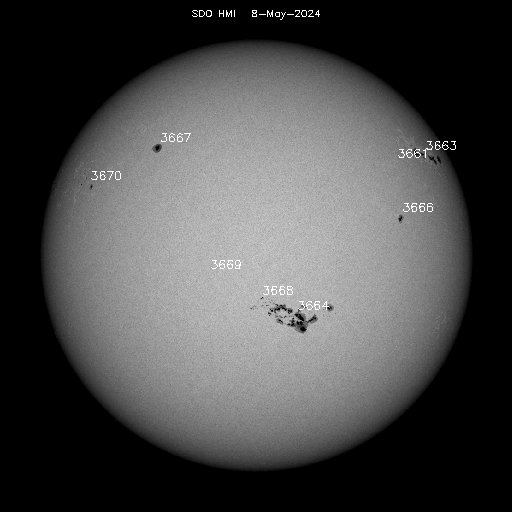Last Saturday I captured this image of the Andromeda Galaxy (M31) from Boada, Salamanca, Spain. The equipment used was a Canon 550D, a 200mm SIGMA APO teleobjective with an exposure of 60 secs at ISO 12500. The Celestron CG5 mount was used to perform the tracking.
The used teleobjective is apochromatic and it is quite convenient for astrophotography. However, I have discovered that the field is not flat enough. Although I cropped the image the distortion is clear. As Miguel commented, it is an empirical assessment about something that astronomers knew long time ago: you must use a telescope, i.e. a large optical length to achieve a flat field close to the axis.... It has been sacrificed in standard photography... so, forget to use all the photographic stuff for astro!!!!!
Thursday 28 June 2012
2012-06-09: Australian Skies
During the australian tour after the Venus transit observation in Canberra, Miguel Sanchez-Portal and me captured the following images of the southern winter sky in Australia. The images were obtained somewhere in the road near to Barthust, New South Wales, with a Canon550D with ISO forced mode, full aperture and 15 seconds of exposure.
Southern Area of Scorpio
Southern Cross and Alpha Centauri
Magellanic Clouds
So, it is quite evident that light pollution is nearly inexistent in Australia.
Sunday 20 May 2012
The Sun in H-alpha during the Venus Transit Day at ESAC
The Venus Transit Day was held at ESAC on the 09 May 2012. One of the activities scheduled for the day was an automated Sun observation from around 10am till 18pm, as a demonstration of the observations to be performed of the actual Venus Transit, on 6 June 2012. Real time images of the Sun were displayed with a video beam projector in the ESAC cafeteria during lunch. The images were posted in a dedicated webpage that will be used for the Venus Transit (http://www.sciops.esa.int/index.php?project=VENUSEXPRESS&page=venus_transit).
A video was created with the images of the day.
Part of this video, and other interviews of the Venus Transit Day will be aired in Euronews (http://www.euronews.com/) starting from 24 May.
The equipment was a Messier R102 Optical tube with a Baader solar filter, and a Coronado SolarMaxII 90 BF30, in piggyback, mounted on top of a Meade LXD75/EXOS-2 Goto mount. Images were acquired with a Nikon D3100 and a Canon EOS 500, transfered to ESAC servers for automated processing and storage through dedicated pipelines, and delivered via WebDB to outside viewers.
The most spectacular images were captured in the H-alpha channel. Here an example of those, a vulture transit, captured in flight around the Aulencia Castle.
A video was created with the images of the day.
The Sun in H-alpha on the 09 May 2012 (one image captured every 30sec).
Part of this video, and other interviews of the Venus Transit Day will be aired in Euronews (http://www.euronews.com/) starting from 24 May.
The equipment was a Messier R102 Optical tube with a Baader solar filter, and a Coronado SolarMaxII 90 BF30, in piggyback, mounted on top of a Meade LXD75/EXOS-2 Goto mount. Images were acquired with a Nikon D3100 and a Canon EOS 500, transfered to ESAC servers for automated processing and storage through dedicated pipelines, and delivered via WebDB to outside viewers.
 |
| Telescope mount set-up |
The most spectacular images were captured in the H-alpha channel. Here an example of those, a vulture transit, captured in flight around the Aulencia Castle.
|
|
| Vulture transit in H-alpha |
Saturday 7 April 2012
M81 - 200 sec unguided!
Sunday 25 March 2012
First tests with PhD guiding

M51 800 sec. Sligthly smoothed, logarithmic scale (processed with DS9).
The orientation is now almost correct (i.e. N nearly on top, E to the left)

Left:M51, 800 sec image resulting from two guided exposures of 300 and 500 sec. Right: a single 200 sec unguided exposure of M81. Raw images (no colour composition)
Last night, I performed my first successful tests with a (rudimentary) autoguiding arrangement on top of my C6N-ASGT telescope (6-inch reflector on CG5-GT mount). The guiding hardware consists of a Meade 8 x 50 finderscope piggybacked on the Celestron OTA and an old compact CMOS camera used in webcam mode. I removed the small fixed focus objective (and IR filter) and attached a 0.96' eyepiece barrel that fits perfectly to the finder helical focuser. Though the camera is not very sensitive, the wide field of the finderscope and the movement range provided by the mounting rings usually allow to find a star bright enough to permit guiding. The software used is PhD guiding. The mount control is done using the ASCOM drivers. An old (2003!) Pentium 4 laptop (2.66 GHz, 768 MB ram, 40 GB disk) has revealed enough to run both the guiding system and the Orion Starshoot II CCD camera software (MaximDL).

I started doing a careful polar alignment: 2-star alignment with 2 calibration stars, then polar align and finally repeated the 2 stars+ 2 calibration stars procedure. As a result of this fine alignment, I was (for the first time) able to do a relatively long (200 sec) unguided exposure (M81 image on the right). The first guided tests were unsuccessful: the star SNR was too low to permit guiding. Eventually I realized that the problem was related to poor focus. Then I decided to try focusing a bright star (Mizar) moving the finderscope helical focuser until reaching maximum S/N. Moreover, I changed a couple of PhD parameters, namely the duration of the calibration pulse (from 750 to 1000 msec) and the minimum fraction of pixel to move the mount (from 0.15 to 0.10 pixel). These parameters are better suited to the short focus guiding system. Actually the pulse duration can be further increased (to say, 1200 msec) to reduce the number of calibration steps required. Another important thing to do is to force calibration at each target, unless you move between very close areas in the sky.
Taking all these things into account, I went to one of my favourite targets: M51. One of the problems with this object is the relative scarcity of bright nearby stars. Anyhow I managed to find a suitable one by moving the finderscope across the range allowed by the mounting rings. I set the webcam exposure time to 4 sec (some 30 frames are stacked to get one exposure), made a dark frame and a very dim point appeared in the webcam field. It was enough to make the calibration and finally start guiding. The software kept the star on spot very accurately in a 300 sec exposure, so I increased the time to 500 sec with identical result. A third, 600 sec exposure was aborted due to the exhaustion of the webcam battery so my experiments ended then. But I'm really happy with these results!
Wednesday 14 March 2012
2012-03-14: Venus Jupiter conjunction - The Planetary Party II
The Planetary Party was held at ESAC after sunset, on 14th March 2012. Venus and Jupiter came closest in a conjunction about 3.5deg apart. Around 30 people gathered around the telescopes to watch the beautiful show.
Venus and Jupiter setting during the ESAC Planetary Party.
Mounting the telescopes before the ESAC Planetary Party.

Venus, the jewel of the night, was seen as a magnificent bright beacon, outshining any other star or planet in the sky.

Jupiter seemed to the naked eye a mere companion of Venus in their diving beyond the horizon, over the Aulencia castle. But through the telescope he showed its might. For a good reason he is the king of the planets.

Mars could be seen in the Eastern sky, with a remarkable reddish hue showing clearly the northern polar cap. Mars raised high in the sky during the night, chasing its companions. He did not to want to miss the show.


The party finished with the farewell of the most prominent object of the winter sky: M42, the Orion Nebula. The images were captured during the observation in order to shown the chromatic richness of this nebula. Visually through the telescope it is perceived as a diffuse but structured greenish area.
Monday 12 March 2012
2012-03-14: Venus Jupiter conjunction - The Planetary Party I
Venus and Jupiter which can currently be seen in the evening sky shortly after sunset, will be in conjunction (less than 3.5 deg apparent separation) this week.
 Additionally, Mercury should be visible just after sunset too, at least through a well aligned telescope, and Mars and Saturn become visible later during the night.
Additionally, Mercury should be visible just after sunset too, at least through a well aligned telescope, and Mars and Saturn become visible later during the night.Therefore some members of the ESAC Astronomy Club will setup their telescopes close to the SMOS antenna (building M) on Wednesday 2012-03-14 evening.
Whoever working at ESAC and interested in looking through a telescope is welcome to join us.
Preliminary agenda:
19:00 Mercury
19:30 Venus & Jupiter
21:00 Double Cluster & Pleiades & M42 Orion Nebula
22:00 Mars & M41 Open Cluster & M47 Open Cluster
23:30 Saturn
Preliminary agenda:
19:00 Mercury
19:30 Venus & Jupiter
21:00 Double Cluster & Pleiades & M42 Orion Nebula
22:00 Mars & M41 Open Cluster & M47 Open Cluster
23:30 Saturn
Friday 9 March 2012
The active Sun Spot group AR1429
The Sun Spot group AR1429 is a very active sun region that has produced recently two major solar flares with coronal mass ejections: the first one was an X1-class on March 5th 04:13UTC, and the second, even more powerful, an X5-class on March 7th at 00:28 UTC.
Several spacecraft have been affected by the heavy radiation and unleashed wave of solar plasma and energetic particles. By example, the Star Tracker units of the probe Venus Express were blinded for 2 days due to the harsh plasma environment in the aftermath of the CME cloud shock wave.
The next images, taken from ESAC on March 10th, 2012, show the Sun in visible and H-alpha, highlighting the AR1429.

AR1429 sunspot group in visible light. Stacked sequence with a Phillips ToUcam webcam, and a Celestron C8" NGT scope with Baader filter.
Tuesday 6 March 2012
Venus and Jupiter at Sunset
Venus and Jupiter are a beautiful sight this month in the Western sky at sunset. They come closest (conjunction) on 14th March, 2012, only 3 degrees apart.
The time-lapse movies shows the inspiring set of the two bodies on the western horizon.
The time-lapse movies shows the inspiring set of the two bodies on the western horizon.
Venus and Jupiter at Sunset, Majadahonda, Spain from Miguel Perez Ayucar on Vimeo.
Venus and Jupiter at sunset, Baqueira from Miguel Perez Ayucar on Vimeo.
Thursday 23 February 2012
Eskimo Nebula (NGC 2392)

On 2012-02-17 at 00:30 UTC, the Eskimo Nebula - NGC 2392 -Caldwell 39 was captured with my C8 scope and a Canon EOS 550D in the visible range. The image is the result of an integration of 3x10s exposures.
Saturday 18 February 2012
The Sun with Nikon D3100

The image shows the Sun in H-alpha through Leo's Solarmax 70 telescope, as seen on Friday 17th February. Miguel's Nikon D3100 camera was used for image capture. This is our first attempt to image the Sun with such camera. Antonio Talavera lent the Nikon adapter ring.
Date Shot: 17/02/2012 15:23:43.40
Image Quality: Jpeg Fine (8-bit)
Shutter Speed: 1/25s
ISO Sensitivity: ISO 100
Image was processed with PSP8. Different processing was performed for the limb and disk, and combined via disk masking.
Subscribe to:
Posts (Atom)













